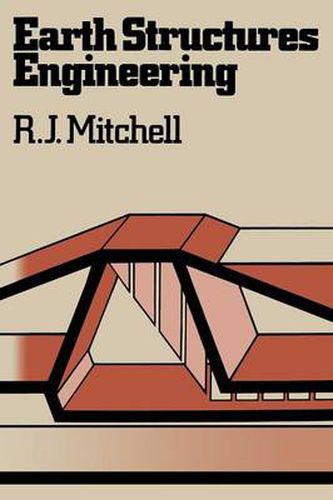Readings Newsletter
Become a Readings Member to make your shopping experience even easier.
Sign in or sign up for free!
You’re not far away from qualifying for FREE standard shipping within Australia
You’ve qualified for FREE standard shipping within Australia
The cart is loading…






This title is printed to order. This book may have been self-published. If so, we cannot guarantee the quality of the content. In the main most books will have gone through the editing process however some may not. We therefore suggest that you be aware of this before ordering this book. If in doubt check either the author or publisher’s details as we are unable to accept any returns unless they are faulty. Please contact us if you have any questions.
Earth structures engineering involves the analysis, design and construction of structures, such as slopes and dams, that are composed mainly of earth materials, and this is a growth area in geotechnical engineering practice. This growth is due largely to increased involvement in designing various types of earth structures for the resources industries (slopes, impoundment structures, offshore islands, mine backfills), to the development of increas ingly large hydroelectric projects, to the need for more freshwater storage and diversion schemes, and to the need for transportation, communications and other facilities in areas where the natural earth materials are occasionally subject to mass instabilities. Although geotechnical engineering transects traditional disciplinary boundaries of civil, geological and mining engineering, the majority of geotechnical engineers are graduates from civil engineering schools. Here the geotechnical instruction has been concentrated on soil mechanics and foundation engineering because foundation engineering has traditionally been the major component of geotechnical practice. Geotechnical special ists, however, generally have acquired considerable formal or informal training beyond their first engineering degree, and an advanced degree with considerable cross-discipline course content is still considered an advantage for a young engineer entering a career in geotechnical engineering. Practical job experience is, of course, a necessary part of professional development but is readily interpreted and assimilated only if the required background training has been obtained.
$9.00 standard shipping within Australia
FREE standard shipping within Australia for orders over $100.00
Express & International shipping calculated at checkout
This title is printed to order. This book may have been self-published. If so, we cannot guarantee the quality of the content. In the main most books will have gone through the editing process however some may not. We therefore suggest that you be aware of this before ordering this book. If in doubt check either the author or publisher’s details as we are unable to accept any returns unless they are faulty. Please contact us if you have any questions.
Earth structures engineering involves the analysis, design and construction of structures, such as slopes and dams, that are composed mainly of earth materials, and this is a growth area in geotechnical engineering practice. This growth is due largely to increased involvement in designing various types of earth structures for the resources industries (slopes, impoundment structures, offshore islands, mine backfills), to the development of increas ingly large hydroelectric projects, to the need for more freshwater storage and diversion schemes, and to the need for transportation, communications and other facilities in areas where the natural earth materials are occasionally subject to mass instabilities. Although geotechnical engineering transects traditional disciplinary boundaries of civil, geological and mining engineering, the majority of geotechnical engineers are graduates from civil engineering schools. Here the geotechnical instruction has been concentrated on soil mechanics and foundation engineering because foundation engineering has traditionally been the major component of geotechnical practice. Geotechnical special ists, however, generally have acquired considerable formal or informal training beyond their first engineering degree, and an advanced degree with considerable cross-discipline course content is still considered an advantage for a young engineer entering a career in geotechnical engineering. Practical job experience is, of course, a necessary part of professional development but is readily interpreted and assimilated only if the required background training has been obtained.